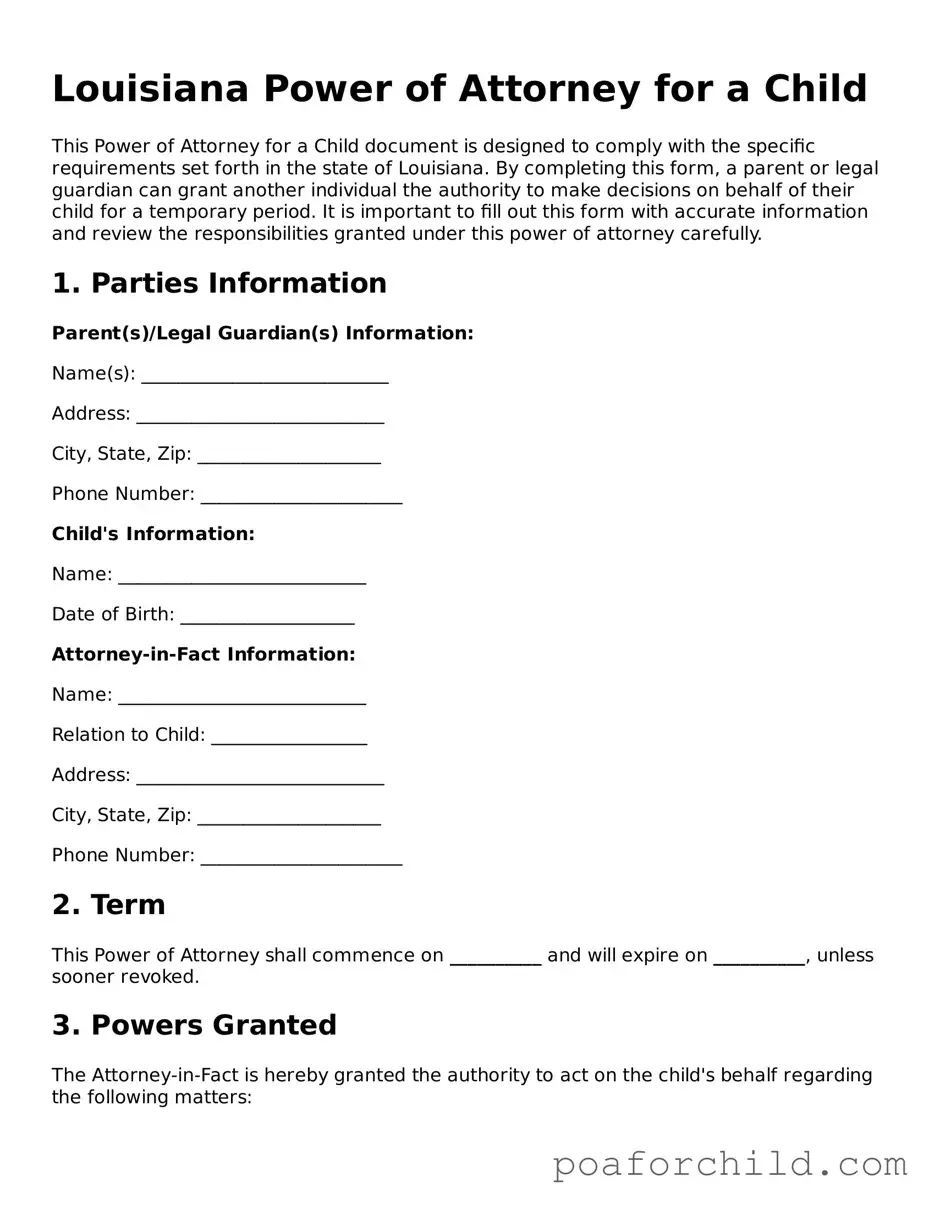Detailed Guide for Using Louisiana Power of Attorney for a Child
Filling out the Louisiana Power of Attorney for a Child form is a critical process that grants an individual the legal authority to make decisions on behalf of a child. This form is often used when parents or guardians are unable to care for their child due to various reasons, including being away for work, health issues, or other personal circumstances. The following steps will guide you through completing the form accurately and effectively, ensuring that the welfare of the child is legally safeguarded by a trusted adult.
- Gather necessary information including the full names and addresses of the parent(s) or current legal guardian(s), the appointed attorney-in-fact, and the child. Also, have details regarding the child’s medical providers and any specific health issues that should be noted.
- At the top of the form, enter the date on which the power of attorney will begin.
- Write the full names and addresses of the parent(s) or guardian(s) in the designated section.
- In the section allocated for the attorney-in-fact, fill in their full name and address.
- Provide the child’s full name and date of birth in the specified area on the form.
- Detail any specific powers being granted to the attorney-in-fact regarding the child’s care. This can include decisions about education, health care, and general welfare.
- If there are any powers that the parent(s) or guardian(s) do not wish to grant to the attorney-in-fact, specify these limitations clearly in the space provided.
- Include the period for which the power of attorney will be valid. Louisiana law allows for a maximum duration of one year for a power of attorney for a minor child, unless otherwise specified.
- Both the granting parent(s) or guardian(s) and the attorney-in-fact must sign the form in the presence of a notary public. Ensure that this step is completed to validate the form legally.
- Have the form notarized. The notary public will verify the identities of all signing parties and seal the document, making it legally binding.
- Keep the original notarized form in a safe place. Distribute copies to relevant parties, such as the attorney-in-fact, the child’s school, and medical providers, as necessary.
Once the form is fully completed and notarized, the attorney-in-fact will have the legal authority to make decisions for the child as specified in the document. It is essential to review the form regularly and update it as needed to reflect any changes in circumstance or to extend the duration of the agreement. This ensures that the child's needs are continually met and that all actions taken are in their best interest.
